Special Feature 2022 - Integrated Report 2022
History of Nidec Corporation
As the world’s leading comprehensive motor manufacturer, Nidec has achieved continuous growth through business diversification and by continuing to meet the needs of society.

Nippon Densan Corporation (now Nidec) established.
On July 23, 1973, Shigenobu Nagamori, who was then 28 years old and who now serves as Representative Director and Chairman, established Nippon Densan Corporation (now Nidec Corporation) with three friends in Nishikyo-ku, Kyoto. With the aspiration of “becoming No. 1 in the world,” the four young men started to manufacture and sell small AC motors. Because it was difficult to find customers in Japan, Nagamori flew to the United States, where he visited potential customers without prior appointments.
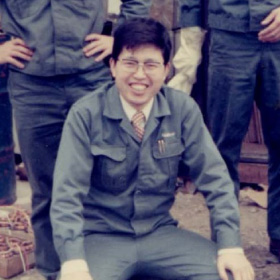
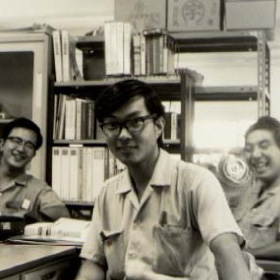
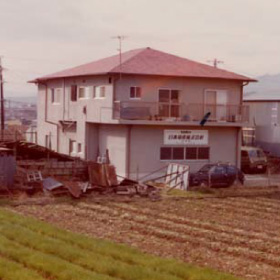
An encounter with the brushless DC motor
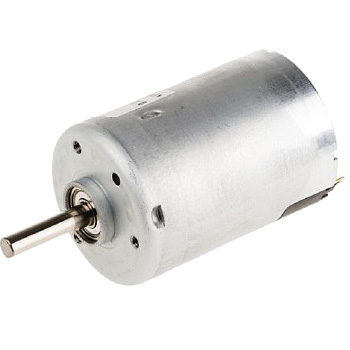
Fascinated by brushless DC motors, which feature low noise, long life and compact size, Nagamori was immersed in its research in his school days. However, the brushless DC motor market was still small in those days, and brushless DC motors were used only for limited applications such as fish finders.
At the request of an electric equipment manufacturer in the United States, Nidec developed a direct-drive*1 motor for hard disc drives (HDDs) using brushless DC technology, and successfully launched mass production in 1979. Direct-drive HDD motors contributed to the miniaturization and high storage capacity of HDDs, and HDDs rapidly became widespread as a computer storage device. Since then, brushless DC motors have been the pillar of Nidec’s business. As the world’s No.1 manufacturer of brushless DC motors, Nidec has established a dominant position in a broad range of markets from IT and automotive devices to home appliances.
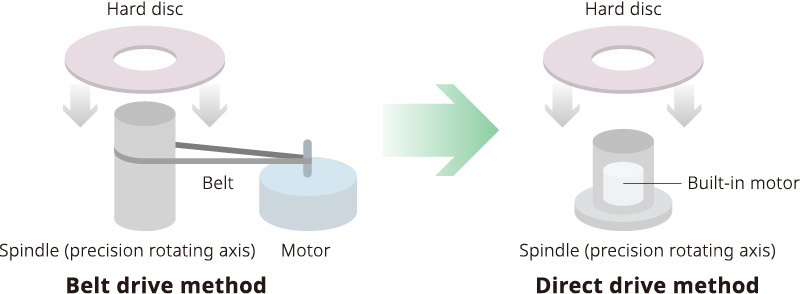
*1 Belt drive method and direct drive method
In those days, AC motors were used to drive HDDs, and the belt drive method, which uses a belt to spin the spindle (precision rotation axis), was the mainstream. Belt-drive HDDs were used mainly as storage devices for large computers. In order to spread computers to ordinary people, it was essential to miniaturize and increase the storage capacity of HDDs, and what made this possible was the direct drive method, which integrates the spindle and motor in a single unit. Nidec played a critical role in developing and commercializing a direct drive spindle motor for HDDs.
M&A as the growth driver
Nidec has completed 68 M&A deals since its founding up to October 2022. In its 49-year history, the company concentrated investment in M&A in two specific periods. The first was between 1995 and 2003, when the bearings for HDD motors shifted to Fluid Dynamic Bearings (FDBs)*2, we obtained the necessary production technologies for the development and mass production of FDBs through 17 M&A deals. The second was between 2010 and 2020, when the HDD market was shrinking, we completed 39 M&A deals mainly in the fields of automotive products and appliances, commercial and industrial products, with the aim of moving beyond a business structure depending largely on HDD motors. Based on the idea of buying time to develop technologies and people, Nidec has utilized M&A and overcome changes in both technologies and markets.
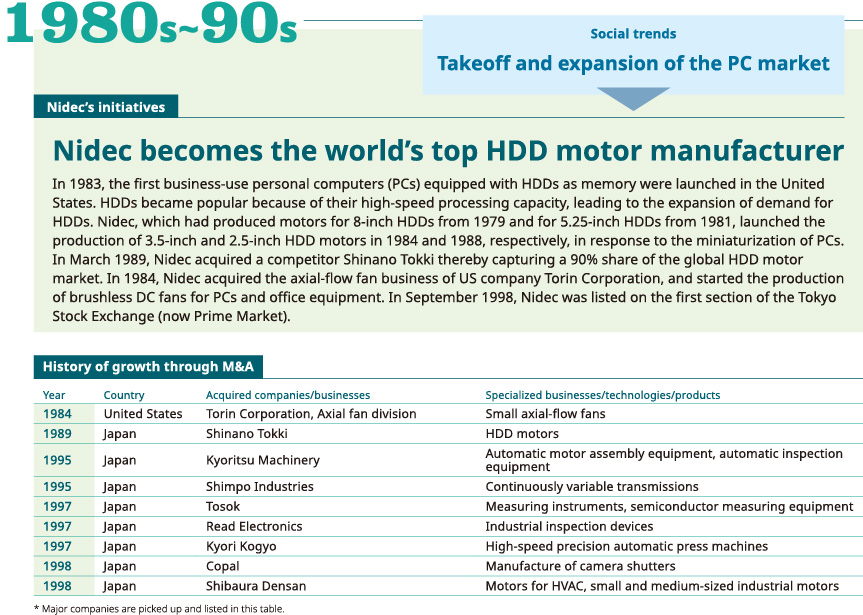
Ball bearings were initially used for HDD motors. But around 1995, it became necessary to improve the rotation accuracy of motors in line with the increase in the capacity of HDDs. Although there were studies on using FDBs for HDD motors, no bearing manufacturers had succeeded in mass production. In order to supply the needed HDD motors, Nidec had to develop and produce FDBs from scratch, which was a big challenge as the company had procured bearings from outside suppliers and assembled them into HDD motors. Therefore, Nidec acquired several companies that had the technologies necessary for the development and production of FDBs. For example, Tosok had advanced measuring technology while Kyori Kogyo and Copal had press technologies to punch motor cores. Sankyo Seiki was leading in FDB technology and had a plant in the Philippines, but mass production was not progressing as planned. By acquiring these technologies, equipment, and engineers through M&A, Nidec succeeded in replacing ball bearings with FDBs and started full-scale mass production of HDD motors with FDBs in 2000, and has maintained a high market share since then.
*2 Fluid Dynamic Bearing (FDB)
In the FDB chamber there is a fluid such as oil between the bearings and the shaft. When the shaft rotates, the fluid’s dynamic pressure generated by the rotation lifts the shaft from the bearings and rotates it smoothly. Although ball bearings were used conventionally, low noise and low vibration have been achieved by shifting to FDBs.
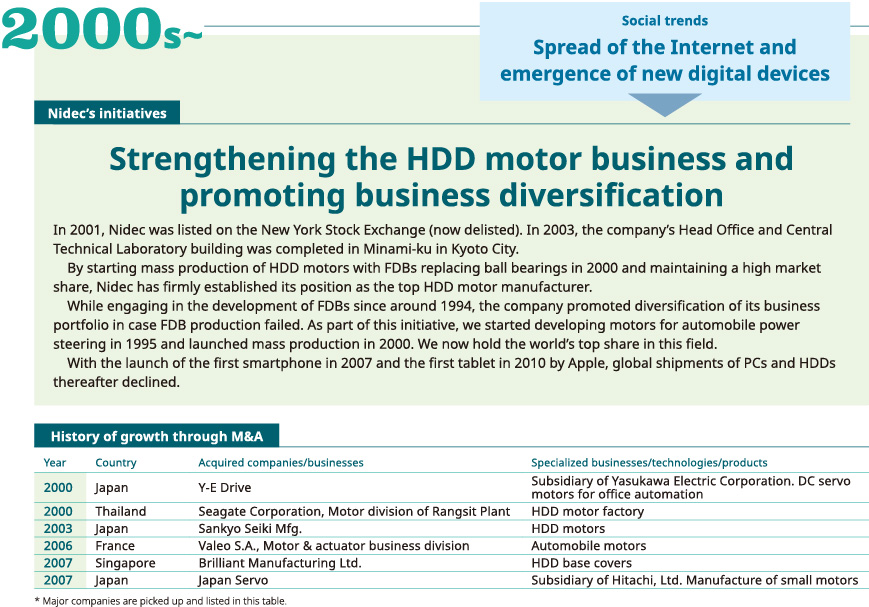
Whether the development of HDD motors with FDBs would succeed was extremely important for Nidec, whose core business was HDD motors. Therefore, in case we failed in this big challenge, we conducted M&A in fields other than HDD motors to diversify our business portfolio. The acquisition of Shibaura Densan in 1998 and Y-E Drive in 2000 provided us with a foothold for advancing into the field of appliances, commercial and industrial products. For power steering motors, we faced difficulty in increasing the number of customers because of the high entry barriers. However, the acquisition of the motor division of Valeo S.A. in France in 2006 dramatically expanded our market.
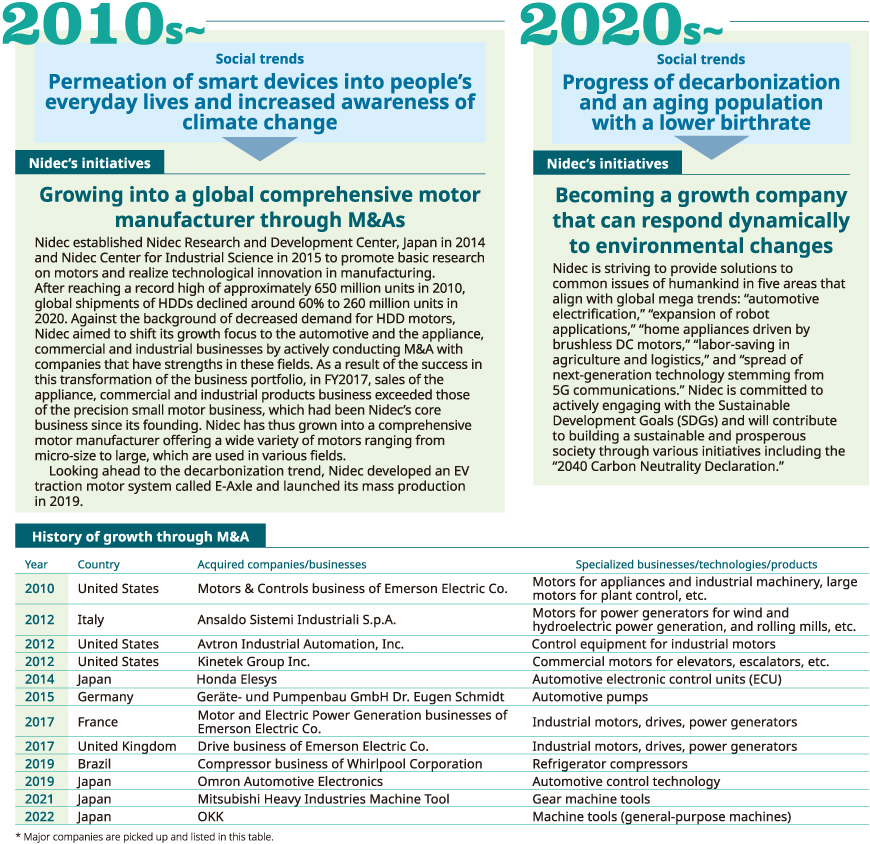
In response to the shrinkage of the HDD market, Nidec promoted diversification of its business by leveraging the technologies it had developed until then and through M&A in the fields of automotive, appliance, commercial and industrial products, where further growth could be expected. In the automotive business, pursuing synergies between Nidec’s automotive motors and the technologies acquired through M&A, Nidec started developing high value-added products for modules and systems. For example, Nidec’s electric power steering (EPS) motor and an electronic control unit (ECU) of Nidec Elesys, which became a Nidec Group company in 2014, were integrated to develop a compact, light power pack with minimum noise. Moreover, for E-Axle, an EV traction motor system, Nidec Elesys was in charge of the development of the inverter. By shifting from production and sales of motors alone to production and sales of modules and systems, Nidec aimed at a transformation from a Tier 2 parts manufacturer to a Tier 1 manufacturer.
Without remaining dependent on HDD motors, whose market was shrinking, and by allocating resources to businesses for automotive, appliance, commercial and industrial products, Nidec was able to overcome its crisis and continue to grow.

